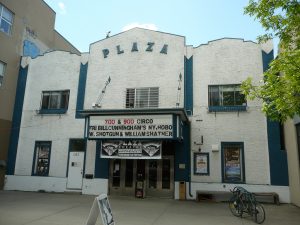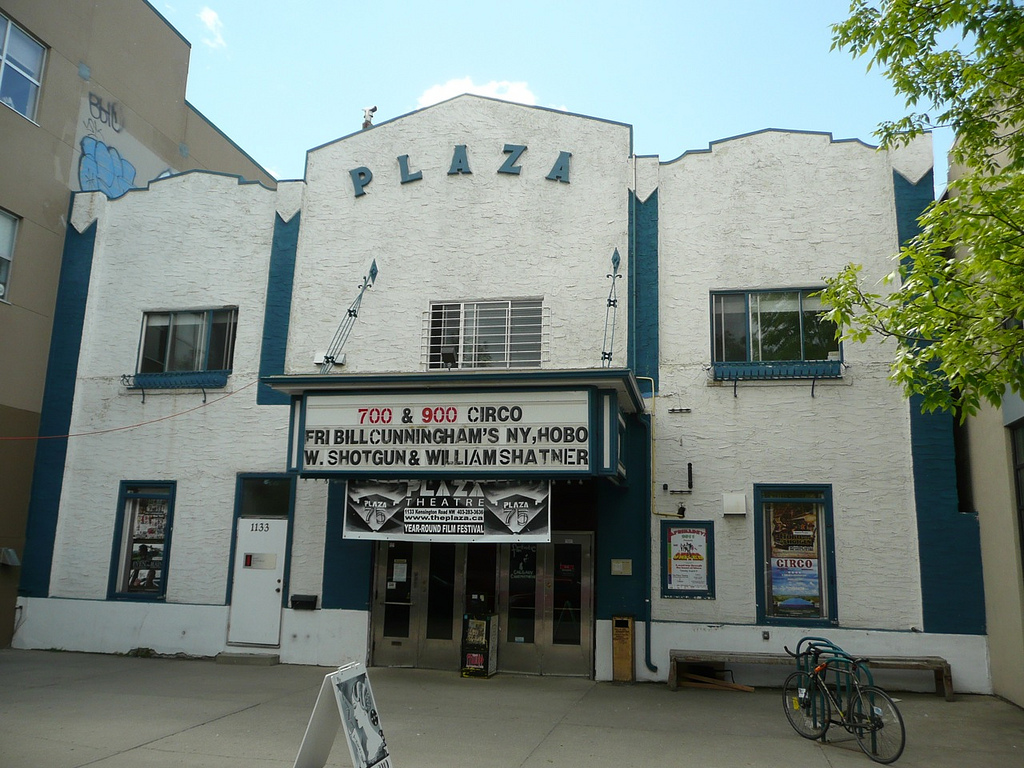
Older single, double and triple screen theatres are truly magical places. They are a place that holds for many a deep and abiding memory and within them you can mark your life. Young children being taken by their parents to see their first Disney movie, a boy and his pals going to see a matinee filling their mouths with golden popcorn and syrupy Coke, a young couple going on their first date, nervously sitting next to each other, a married couple going on too few date nights, an older couple seeing a movie and sitting in the seats when they first dated. In many places, the heart and soul of that community for the most part resided within the movie theatre. I am more than lucky to live in a community that has in it a single screen theatre that has remained in operation since 1923.
It is 1978 I was in my late teenage years, a Danish immigrant by the name of Flemming Nielsen decided to turn an old single screen theatre which had fallen on hard times and only screened Bollywood movies into a repertory house. Flemming had a life long love affair with movies. Immigrating to North America in 1958. Flemming work in a variety of careers the last being a producer in a local television station. HE was fired from his job and as a result he an a partner decided to go into the movie business.
The Plaza was originally built in the 1920’s as an automobile garage, as the depression eroded the local automobile business, the building was soon converted to a neighborhood theatre in 1935. In its early days, the quaint theatre offered second run films and children’s matinees popular during the Depression. It ran second run films for the majority of it’s existence. It was bought by a Sikh business man who started to use the theatre to show Bollywood movies to the burgeoning Indian population. The neighborhood in which the theatre was located had seen better days, and had grown tired and worn. It was on it’s way down.
Then Flemming Nielsen showed up. The now out of work Nielsen thought that this growing city needed a repertory theatre. A repertory theatre or sometimes called a revival house is a movie theatre that specializes in showing classic or notable older films (as opposed to first run films). Such venues may include standard repertory cinemas, multi-function theatres that alternate between old movies and live events, and some first-run theatres that show past favorites alongside current independent films.
Flemming negotiated a lease from the owner of the Plaza and began planning the launch of the theatre,. He understood that their was a love of movies in the culture and this love was not being celebrated locally. He took a look at the Nu-Art and the New Beverly Theatres in Los Angeles and saw that for years they have sustained themselves with a rotational film schedule that saw a new film screening everyday.
It was a slow start, Flemming published a schedule on an 11×17 sheet, usually printed in red . He then sold memberships in the theatre. He was lucky that he operated the theatre in a city which hosted a large film exchange. This exchange held prints of almost every movie released since 1930. The reels were stacked on shelves 10 high and the the rows were organized to distributor. This allowed the movies to be picked up and delivered at a very nominal cost. Today this is not the case with the move to digital delivery and the closure of hundreds of movie exchanges.
At least five distinct movies screened at the Plaza weekly. One night they might screen at 7 PM the next night at 9:30 PM. On Friday and Saturday night there was a midnight movie. There were numerous small distributors that worked the revival house business and did it more than well. There were plenty of prints, and there was an excitement in the movie business. The Plaza soon became the spot locally to go to. A membership at the Plaza provided an opportunity to see foreign films, genre movies, Hollywood classics and cutting edge independents. The membership at the Plaza received a monthly mailout of the 11×17 schedule. You looked forward to that schedule arriving and it usually was hung with pride on many of the city’s refrigerators. That mail-out soon evolved base on the burgeoning membership into something called Cityscope Magazine. Cityscope was a thick and glossy periodical which had as its centerfold as you will, the sought after Plaza Schedule. The membership at the Plaza had quickly grown to the thousands.
It was rare in those days to attend a screening including some of the more obscure ones with less that 70 people in attendance. It did a good and sustained business. The admission was reasonable, the concessions were well priced and the popcorn featured real butter. For me it was a shrine, my school, my place of learning and my window to a wide and wonderful cinematic world. It was their that I saw Casablanca, A Boy And His Dog, Eraserhead, Let It Be, 200 Motels and the bizarre Alejandro Jodorowskys Holy Mountain. This placed changed me and introduced me to a passion that would be a major part of my life.
The experience of the Plaza Theatre was wonderfully consistent, it is only the image on the screen that changed. You walked into a cramped lobby, one one side sat the ticket booth and on the other was the concessions stand. The concession stand sold soft drinks, great popcorn, a few candy products and usually some kinds of home baking. Given some of the odors that wafted through the theatre especially during the concert films, it was thought wise to avoid the baked goods. You walked in, the theatre had about four hundred seats, all made in the 1950’s. The Weight by The Band blared out prior to the show. This music never changed it was always the only music they played prior to the movie or at least it seemed that way.
The audience was respectful, allowing you to enjoy the movie and to be thoughtful at the same time. There was a reverence for the images that flicked on the screen. It was ideal and a perfect way to get introduced to the world of cinema. People flocked to the theatre and it was common to see a line out out the door of people waiting to get in….even in the cold dead of winter.
Moviegoers started looking for place to eat prior to going to the Plaza. Restaurants cropped up in the neighborhood, bars were established for after movie discussion, of which there were many. The neighborhood which was in a depressed state started to thrive and grow. An emerging culture was being defined by the Plaza. Prior to the Plaza beginning operating as a rep house the retail rent in the area was one of the lowest in the City, in a few short years the area exploded and began the place to establish a retail outlet. Wine stores, clothing boutiques, vintage record stores, five star hotels and four star restaurants all emerge out of the soil tilled by The Plaza. A healthy and vital movie theatre is the best economic incentive a downtown core could ever have….period.
The party lasted for 20 years, the movie industry caught the attention of Wall Street, small active distribution companies were acquired by large media behemoths. These large companies cared little for the rep cinema. The days of the movie showman were coming to an end. Prints dried up, distributors went away and the major studios just did not care. The Plaza in order to survive moved away from the repertory model to a first run Art house model. It exists today, but when I drive by it I still hear The Weight and feel real butter on my fingers. I miss it.
Cityscope Magazine is no more, the neighborhood in which the Plaza sits has lost a bit of it’s perkiness, Flemming Nielsen has entered into a well deserved retirement. I have the firm belief that the love of movies still deeply exists in our culture and in our economy always wafting above us…..it is just looking for a place to land. Support efforts like the League of Historic Theatres, Support Independent theatres, go to your local Mainstreet USA office and let them know that if they were truly interested in re-igniting their downtown core, the best way to do it is to bring back their theatres.

